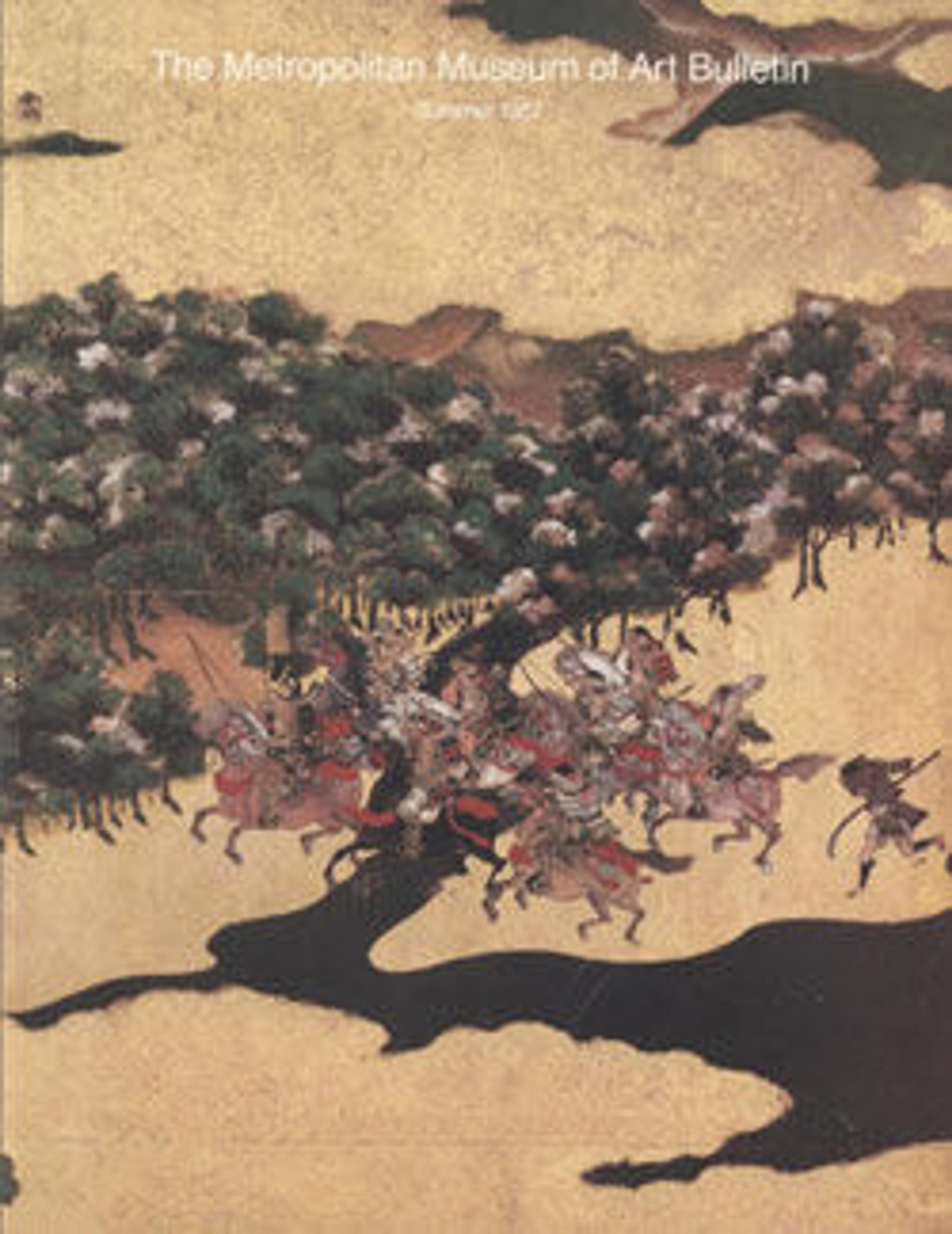Reeds and Geese
This pair of hanging scrolls (with 1977.172), though separated recently as is apparent from their different mountings, once formed part of a triptych flanking a central scroll that depicted the Daoist immortal Lu Dongbin (now in the Nelson-Atkins Museum, Kansas City). This schema, cultivated and popular in Zen temples in Japan, reflected the desire to express the underlying unity of the natural and spiritual worlds. The flying, calling, sleeping, and feeding geese reference the four fundamental aspects of monastic life.
Tesshū Tokusai was one of the most cultivated monks of early Japanese Zen Buddhism. As a spiritual discipline, he devoted himself to painting orchids and geese in the style of contemporary Chinese masters. The inscription on the left scroll, partially damaged, includes the date of the eleventh month, 1343, as well as the words for “Japan” and “a respected scholar.”
Tesshū Tokusai was one of the most cultivated monks of early Japanese Zen Buddhism. As a spiritual discipline, he devoted himself to painting orchids and geese in the style of contemporary Chinese masters. The inscription on the left scroll, partially damaged, includes the date of the eleventh month, 1343, as well as the words for “Japan” and “a respected scholar.”
Artwork Details
- Title: Reeds and Geese
- Artist: Tesshū Tokusai (Japanese, died 1366)
- Period: Nanbokuchō period (1336–92)
- Date: 1343
- Culture: Japan
- Medium: One of a pair of hanging scrolls; ink on silk
- Dimensions: Image: 43 1/2 x 17 3/8 in. (110.5 x 44.1 cm)
Overall: 71 3/4 x 20 1/4 in. (182.2 x 51.4 cm) - Classification: Paintings
- Credit Line: The Harry G. C. Packard Collection of Asian Art, Gift of Harry G. C. Packard, and Purchase, Fletcher, Rogers, Harris Brisbane Dick, and Louis V. Bell Funds, Joseph Pulitzer Bequest, and The Annenberg Fund Inc. Gift, 1975
- Object Number: 1975.268.37
- Curatorial Department: Asian Art
More Artwork
Research Resources
The Met provides unparalleled resources for research and welcomes an international community of students and scholars. The Met's Open Access API is where creators and researchers can connect to the The Met collection. Open Access data and public domain images are available for unrestricted commercial and noncommercial use without permission or fee.
To request images under copyright and other restrictions, please use this Image Request form.
Feedback
We continue to research and examine historical and cultural context for objects in The Met collection. If you have comments or questions about this object record, please contact us using the form below. The Museum looks forward to receiving your comments.
